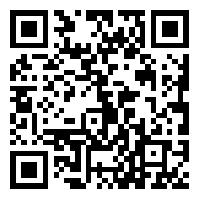3.Thou shall not conflate visit date and transaction date or attempt to reconcile them
"Visit Date" is when the patient shows up and is managed by the site. "Transaction Date" is when the system is used and is contained in the IRT data set. Too much time, too much money, and too many human resources are consumed based on a misunderstanding of these terms and a determination to make them the same. IRT doesn’t track visits, it allocates IMP to be dispensed at a visit. Integrations can make this a bigger challenge.A recent response by vendors is to create two data points in the IRT system: transaction data and visit date. By default the date will be the same in the data base unless a change is requested to change the visit date. While this solves the technical issue of maintaining both dates it acquiesces to the idea that the IRT is a place to manage visit dates.
4.Thou shall limit EDC data point integrations
In EDC integrations, less is more. By limiting these integrations, sponsors can have a consistent and repeatable approach. It has been my experience that when each study starts from scratch with determining what data points to send to EDC, you compromise timelines and quality for both IRT and EDC vendors. A best practice is to only send what is needed to establish a patient’s existence, their basic demographics, and the date of their randomization or enrollments transaction. I have seen this approach used at a sponsor where it was a real advantage. By going beyond this, you welcome the death spiral of system of record or the reconciliation loop of doom. More on that in Commandment #5.I have seen this work extraordinarily well on the sponsor side saving time and resources across many workstreams.
5.Thou shall think long and hard about reconciliation
Reconciliation is a heavy resource activity that under most circumstances should not be undertaken. This is part of the larger story of using the IRT for its primary purposes (Commandment #1) and sending very little data to the EDC (Commandment #4). If you recognize that the IRT is a tool and not a data collection/management system, then you will be in the mindset to understand this. If you think of it as an eCRF or data management system you will be painted into the reconciliation corner. There are only 2 items which I believe the IRT must be considered as the source of, as it is the place in which the data is first recorded: the randomization date/time/treatment and the assignment/allocation of IMP to the patient.
Some sponsors have chosen to also make the IRT the source for what was dispensed (not the same as assigned/allocated) to the subject and ultimately dosed. I support this approach as it again minimizes the need for reconciliation as the IRT data set is the source of truth for IMP, as opposed to the EDC. I am arguing you could even forego reconciling strata data as the data entered was in fact the data used to perform the randomization, even if it was erroneous (See Commandment #6). The truth can lie in EDC.

 Learn More
Learn More
